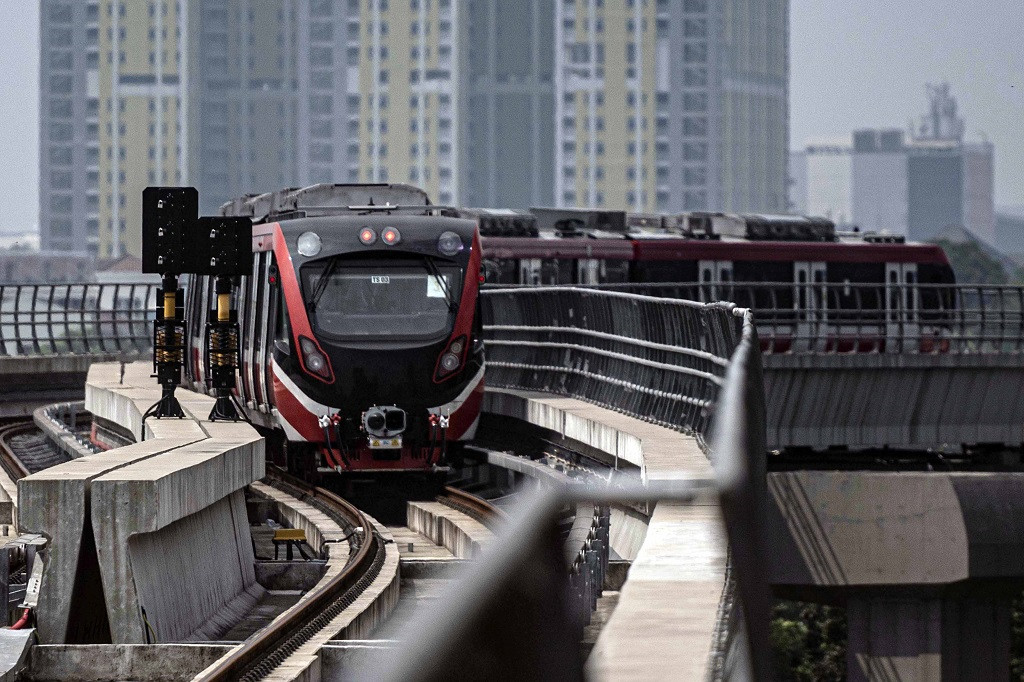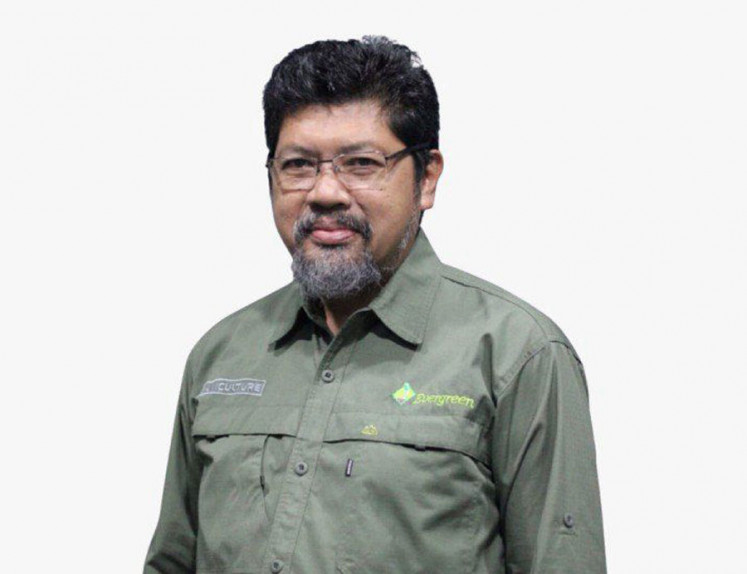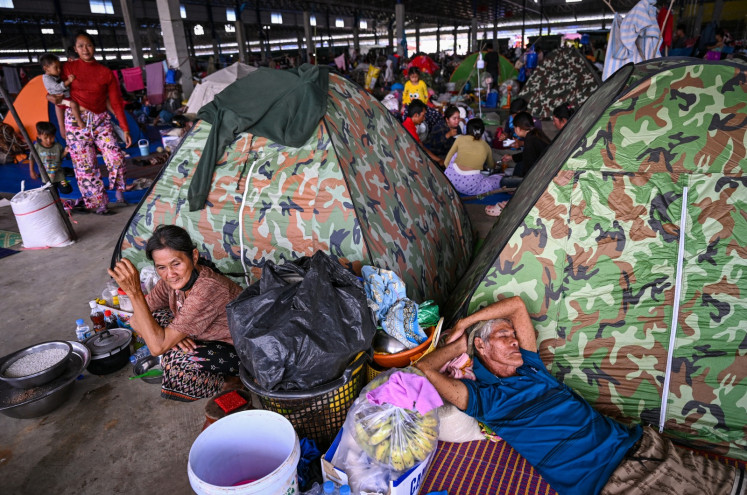Popular Reads
Top Results
Can't find what you're looking for?
View all search resultsPopular Reads
Top Results
Can't find what you're looking for?
View all search resultsMore LRT, please
Both LRTs need to be extended and developed further to improve all existing lines and cater to more passengers.
Change text size
Gift Premium Articles
to Anyone
T
he long-delayed Greater Jakarta light rail transit (LRT) project has finally come into operation, four years off its original target of 2018. It will connect the capital city and suburbs such as Bekasi and Depok in West Java, which later will be extended southward to Bogor and eastward to Karawang, also in West Java.
When President Joko “Jokowi” Widodo inaugurated the LRT on Monday, the project was still beset with numerous troubles, such as delays, power failure, stuck doors and an unsmooth braking system. All the hiccups persisted until Friday.
This is aside from the issue that the train still requires a driver due to delayed automation software. The LRT is supposed to be driverless.
Despite the flaws, the LRT operation shows the government has sufficient resources and capability to develop public transportation, which Jakarta needs the most to fight traffic congestion and, hence, maddening air pollution.
Air pollution in Jakarta already poses a serious threat to public health, while traffic gridlocks have become a routine nightmare. Had the LRT begun its operation on time, Jakarta could have started to ease the two major problems.
A number of ASEAN neighbors constructed their LRT decades ago, finishing them before 2015 when Indonesia first started to make a move on its LRT project. However, it is better late than never, as the old adage goes.
Given the severity of Jakarta’s traffic, the government should realize that a single LRT project will not make a difference. More of these projects, at the scale of the MRT, need to be built, which people in Greater Jakarta can only hope for from the new president elected on Feb. 14, 2024.
Moreover, the government should also take responsibility for two other LRT projects it already built for the 2018 Asian Games, namely the LRT Palembang and LRT Jakarta.
Both LRTs need to be extended and developed further to improve all existing lines and cater to more passengers. This is especially the case for the LRT Jakarta which only serves a route of 5.8 kilometers, compared with those in Singapore and Malaysia that span over 20 kilometers. The LRT Jakarta is perhaps the shortest line, at least in ASEAN.
The government’s work also includes improving connectivity within each of the Jakarta satellite cities. It is unfair for people who commute to the capital on a daily basis to have poor public transportation systems in their cities of residence. Without improving public transportation in the suburbs, all endeavors to facilitate human mobility through public transit development in Jakarta will never achieve their full potential.
If it still takes a lot of legwork for commuters to reach stations from their homes, it is unlikely many will ditch their cars and motorcycles to switch to public transportation as the government tries to imagine.
About 1.5 million people commute from the suburbs for work to Jakarta, which is already home to 10.6 million people.
A survey by Kompas early last year discovered that 8.8 million people across Greater Jakarta had difficulty in accessing public transportation.
Nevertheless, the new LRT train also serves as a lesson if Indonesia wants to develop a well-integrated LRT system in the future.
Deputy State-owned Enterprises Minister Kartika Wirjoatmodjo found that all components for the Greater Jakarta LRT, namely construction, train manufacturing, signaling and automation software, had different specifications and operated without an integrator. This resulted in delays in the project, including mishaps during the early days of the operation as we have witnessed.
Another lesson is that developing a public transportation system should not be confronted with industry policy, especially if the country remains unable to source all components locally, as in the case of the Greater Jakarta LRT.
The same goes for the campaign for electric vehicles (EVs) as a panacea for air pollution in Jakarta. What Jakarta needs is more electric public transportation to solve both congestion and pollution at once, rather than private EVs, some of which will be subsidized by the government.
The use of imported components is inevitable in some public transportation projects because passenger safety is the number one consideration, rather than the desire to demonstrate domestic industry prowess.











